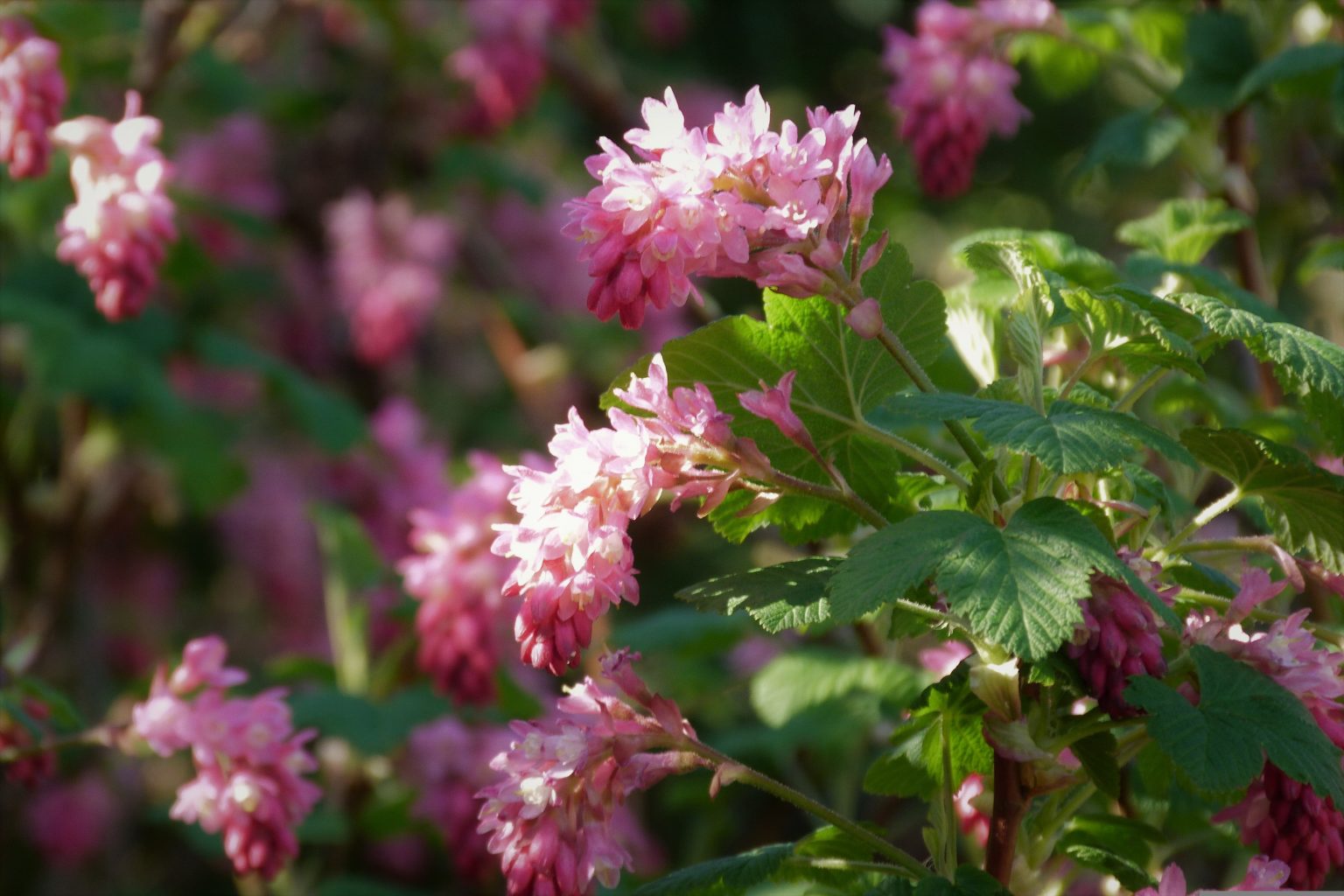
Ribes is a classification name (genus) encompassing approximately 150 – 200 species of flowering plants. Actually, Ribes is the only member of the Grossulariaceae family. They are largely comprised of medium, shrub-like plants with some wonderfully distinct and diverse fruit and flower forms. Commonly known as currants and gooseberries, most of these species originate in the temperate areas of the Northern Hemisphere.
Gooseberries plants have a little prickly spine at each leaf node and the berries, in groups of 2 or 3, are about the size of grapes. Currants, by contrast, do not have the spines on their leaf nodes and have 8 – 30 smaller berries in clusters on the stems.
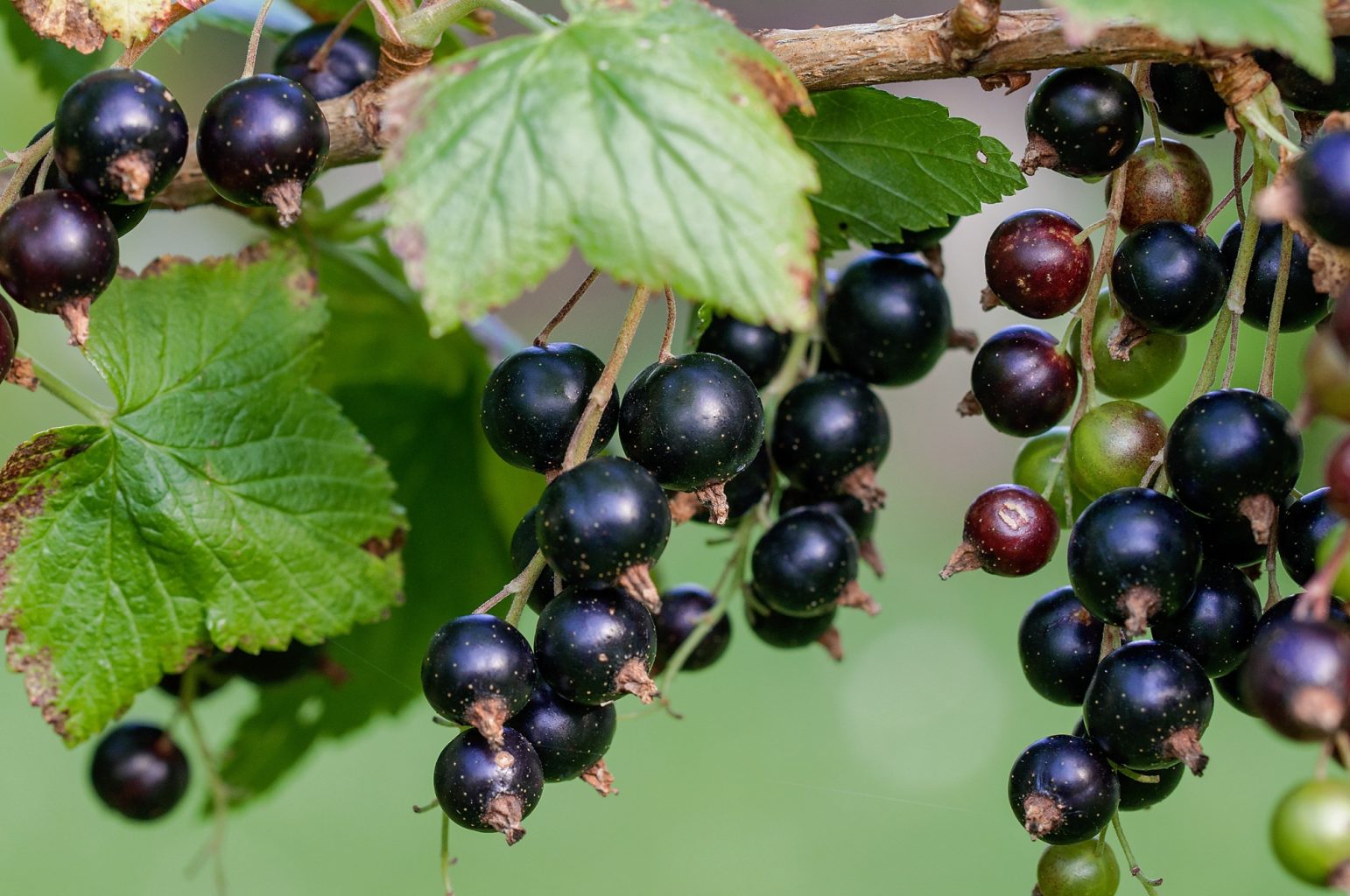
The origin of the genus name Ribes can be traced back to a close similarity between a medicinal rhubarb syrup (long-produced by the Arabic peoples) and syrup made from red currants. The Arabic name for rhubarb was “ribas”. The early European apothecaries, preferring Latin, mistakenly called the red currant syrup “rob ribis” (meaning “syrup of rhubarb”) and botanists eventually applied the misappropriated name “Ribes” to currants and gooseberries.
The word “currant” evolved from the name of the ancient Greek city of Corinth. Corinth was recognized for the production of Zante Currants. “Zante currants” are commonly referred to as currants but they are actually Corinth grapes, grown on vines and dried into small raisins. Currants are smaller and more “berry-flavored” than Corinth grapes, although the dark purple (black currants) do resemble the “Zante currant” when dried.
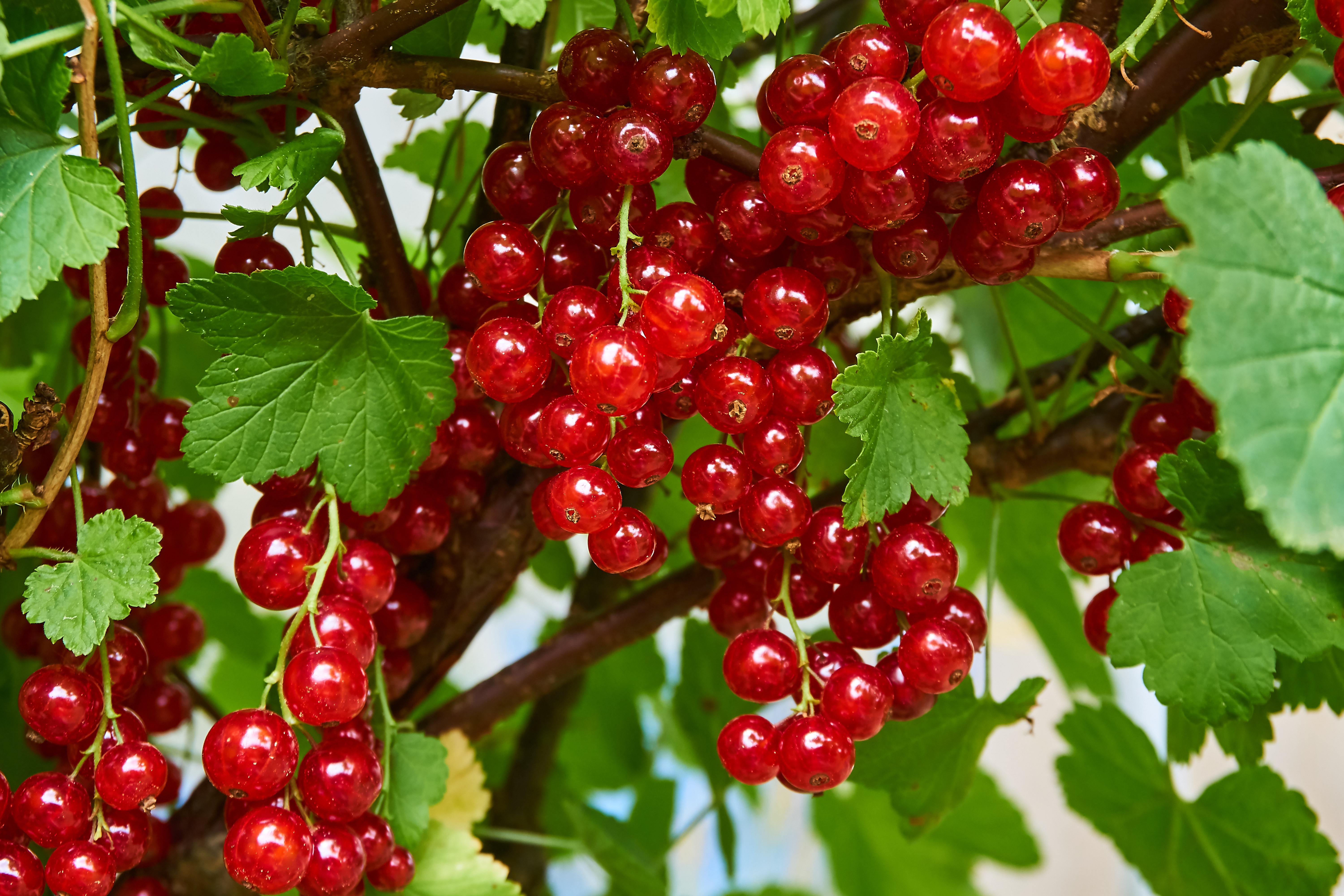
Currants are not often referenced in ancient texts, although ancient Romans were reported to consume a gooseberry-like fruit. History books have records of currants being grown in Russian monasteries a thousand years ago and it is postulated they were then transplanted to Europe from Russia. History also shows the cultivation of red currants (Ribes rubrum) prior to 1600 in the Netherlands, Denmark and areas around the Baltic Sea. It wasn’t until World War II that Vitamin C- rich black currants were cultivated in Great Britain to stave off scurvy. It is estimated that indigenous groups in North America used over 75 species of currant berries as a source of food, medicine and dyes.
In 1911 the U.S. government banned the cultivation, sale and transport of blackcurrants. This came about because it was discovered that the blackcurrant, in common with other Ribes, is a secondary host of white pine blister rust, which threatened the timber industry. The federal ban was lifted in 1966, but many states kept their own restrictions in place. By 2003 the majority of the bans were vacated because of development of rust-immune varieties and improved fungicides. Currants as a popular food item, however, have never really taken hold in a big way, probably partly because many North American people have never had the experience of eating currants.
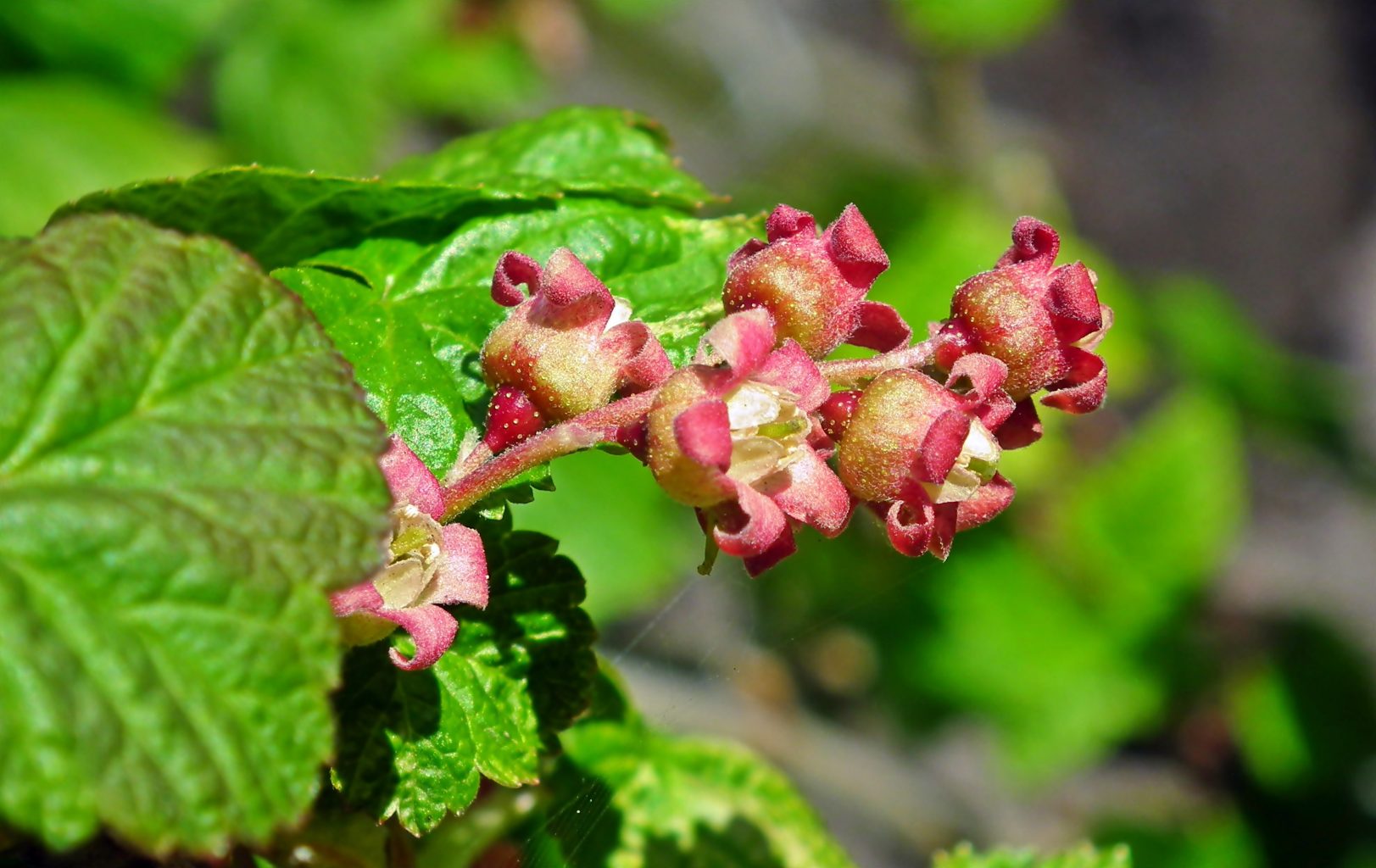
Currant shrubs all blossom in the spring but the flowers of each species are different. For example, the wild black currant has soft yellow, bell-shaped flowers which grow in clusters while a beautiful variety of white currant called “White Icicle” has drooping 4-inch clusters of pure white flowers.
The Red Flowering currant (Ribes sanguineum) is also called Pink Winter Currant or Blood Currant. Sanguineum means “blood-red” in reference to the color of the flowers. Although there is variation from white, pale pink through to the more intense red colors, these varieties are often found in the western portions of Canada, the U.S. and Mexico.
Currant bushes can be a wonderful addition to your landscape and have the advantage of being an edible plant that can grow in the shade. Hummingbirds especially love their tiny flowers.
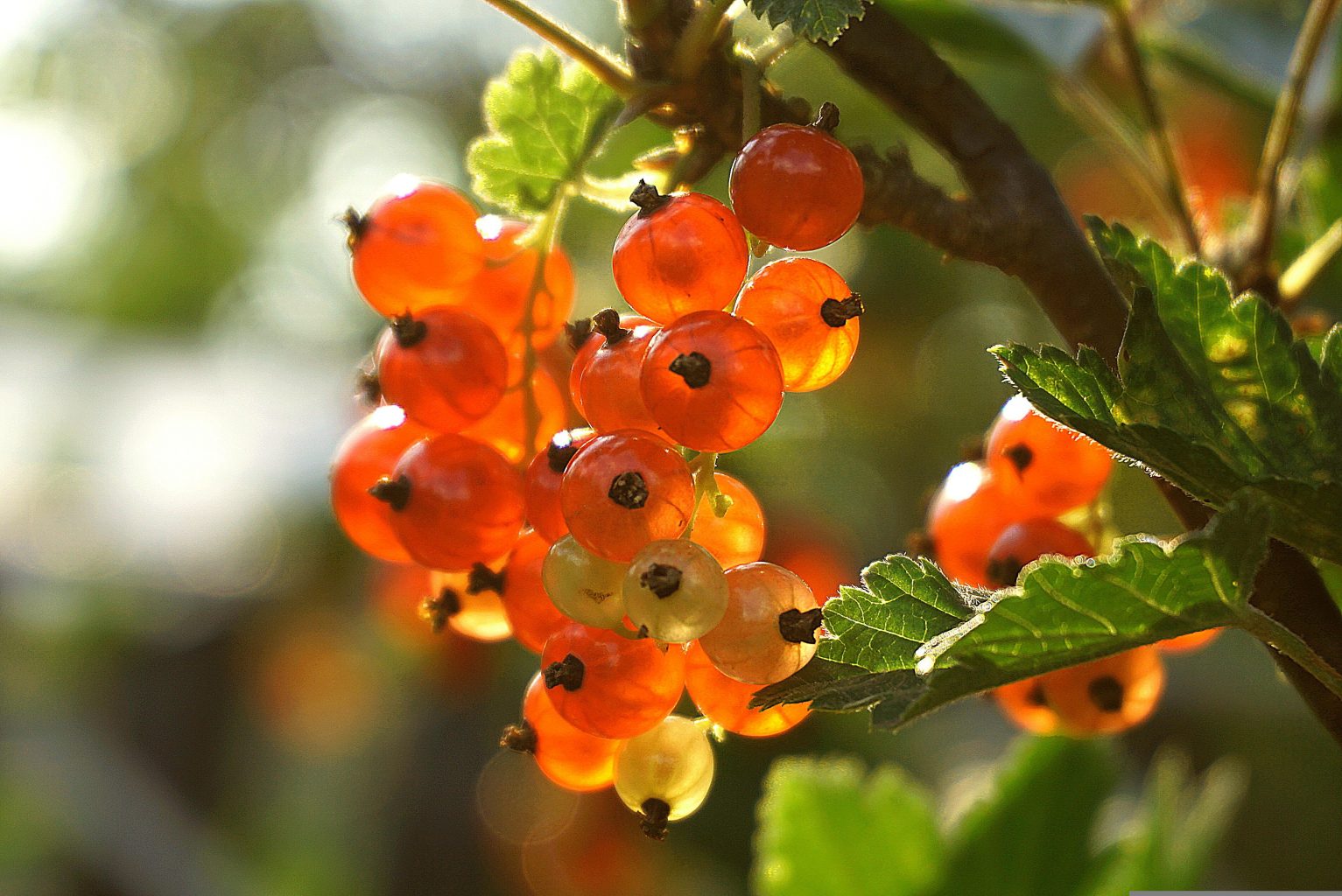
Currant berry colors range from dark purple to ruby red, through pinks to a white that is almost translucent. Red, white and pink currants are usually the ones that are eaten fresh. They are not for everyone as they are mouth-puckering, tart fruits; the white and pink currants being a little sweeter, milder in flavor and less acidic.
Fresh currants, a great source of vitamin C, can be used like berries such as blueberries or raspberries, mixed with other berries, baked into pies, desserts, chutneys or in fruit salads. They are high in natural pectin for jams and jellies, but lack sweetness. Blackcurrants are often used for their juice; they also make delicious preserves, desserts, in flavoring for lozenges and many other uses. Some find blackcurrant works well as a liqueur or as a pairing to complement savory foods.
It is not easy to locate fresh currants, they are more in the class of a specialty fruit, especially with their rather short growing season. They are not easily harvested, are highly perishable and do not travel well. If you look carefully at the “dried currants” found alongside raisins in your local grocery, you will see they are actually the Zante “currants” (Corinth grape) referenced earlier in this article. Currants do freeze well, however, and these are more readily available.
In the world markets Russia is the world leader for growing black currants, followed by Poland and Germany. The Russian varieties can tolerate frost down to minus 50 degrees while the European varieties limit is frost down to minus 35.
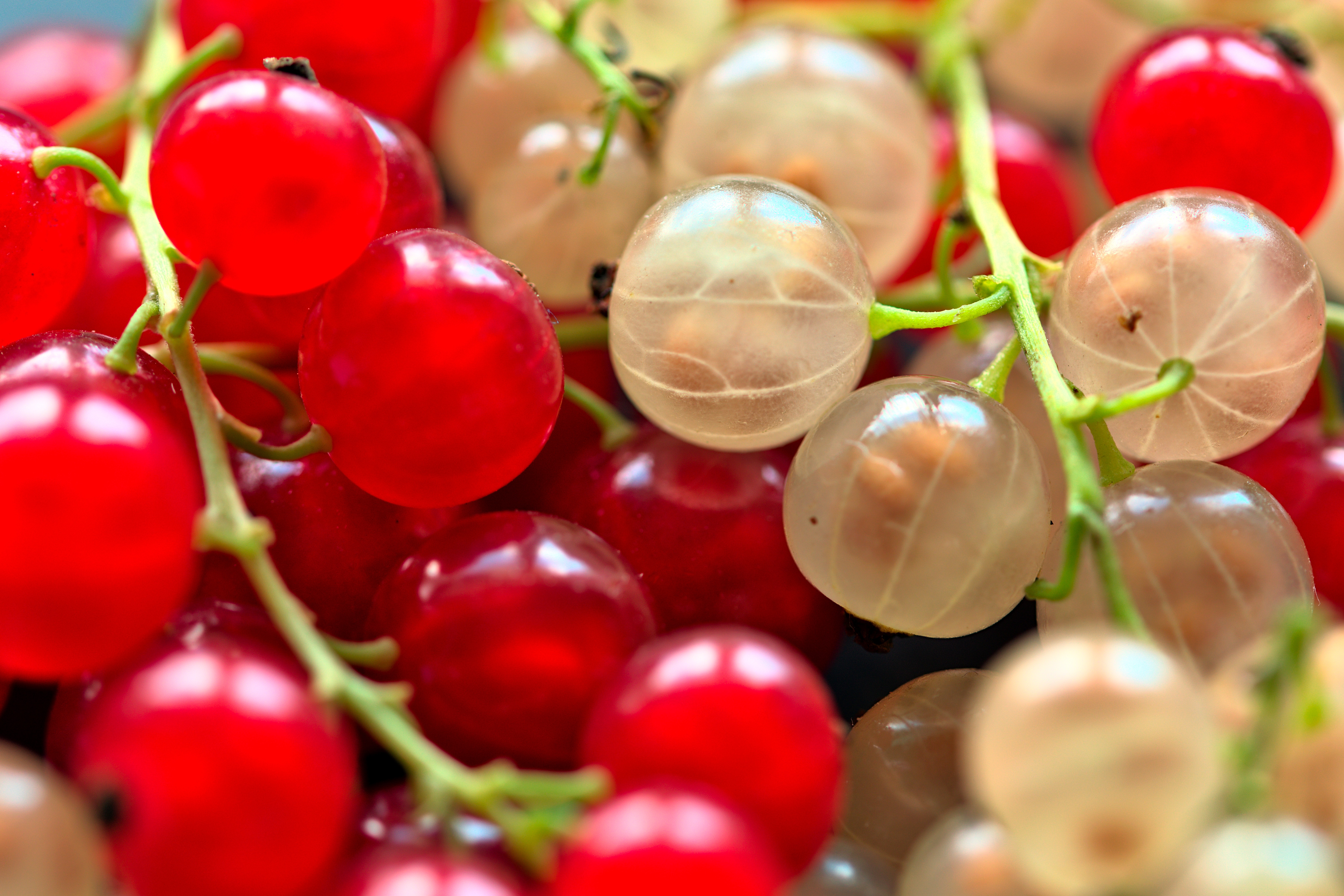
There is an interesting story about a famous French jelly. It was developed in the mid-14th century in the town of Bar-Le-Lac (Lorraine region of northeastern France). Made with red currants simmered in sugar and water, there are several rather arduous tasks associated with the straining and de-seeding process. The result is the currants remain intact, retaining their shape and crispness while covered in a syrup mixture.
It is the de-seeding portion that makes this jelly extraordinary. The process is performed by Epepineuses, people trained as “seeders” (the name Epepineuse is French and literally translates to “seeder”). A goose feather, sliced open in a specific way along its quill creates a small tool that is sharp enough to pierce the skin of the currant on an angle, move the seed inside the hollow portion of the quill and then replace the flap of currant skin over the puncture point.
Depending on the variety of currant there may be 6 to 20 seeds to remove but apparently Epepineuses could process about 6,000 currants per day (it takes 1,000 currants to make just over a pound of jelly). Needless to say, the jelly was historically limited to the upper classes and nobility of the French courts. Mary Queen of Scots was said to have particularly enjoyed the jelly, as did Alfred Hitchcock. A rare specialty item, at last report there was only one modern day company that still produces some limited quantities of the Bar-de-Lac jelly.
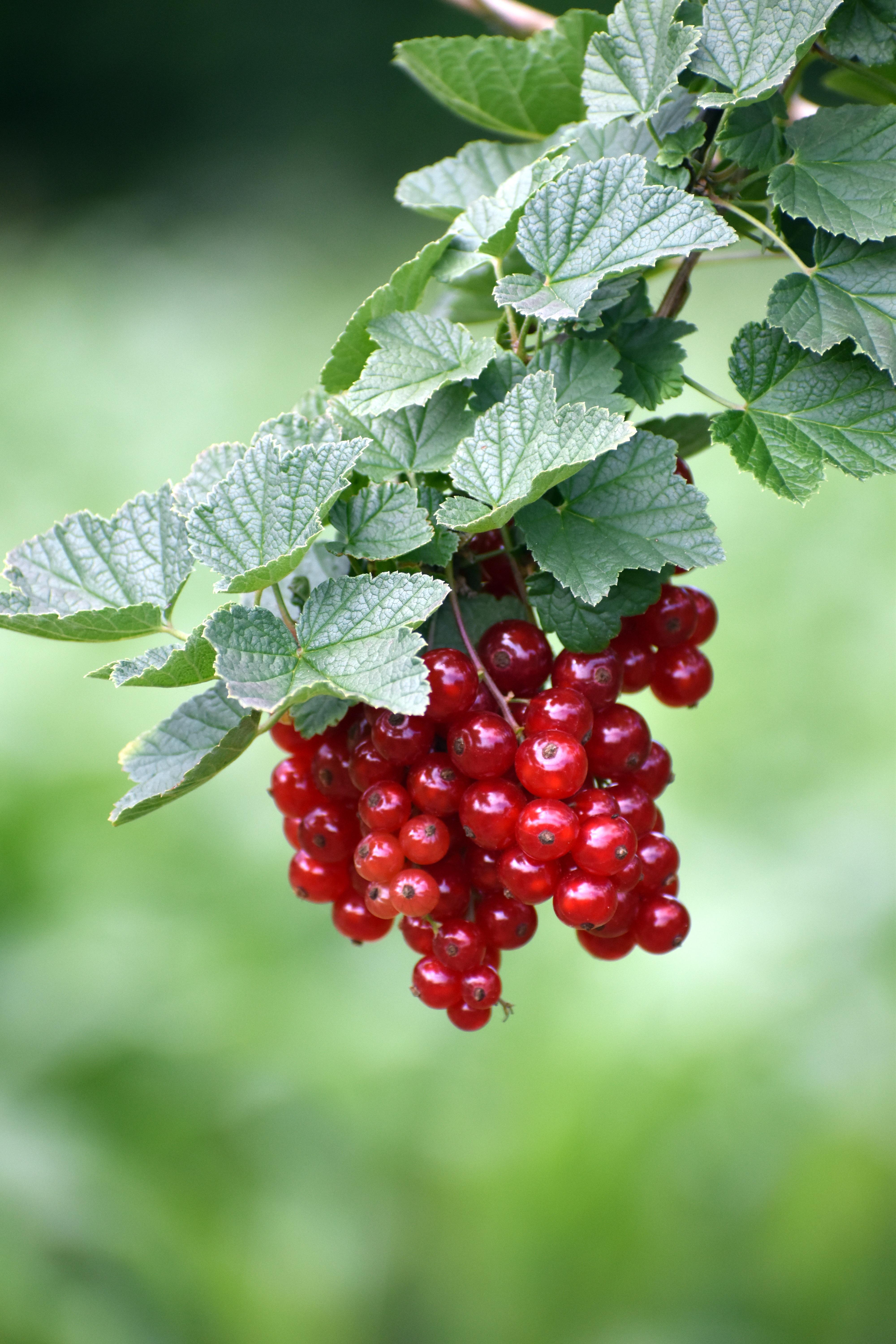
One interpretation of currant’s message involves “igniting compassion to transform fears through forgiveness and understanding”.
In our quest to form relationships to the plant world, the currant appears to offer a rather unique message. Looking back through this article we have its name and identity confused to this very day with rhubarb and Corinth grapes. Currants were not well-documented throughout history, were banned for many years in the highly influential markets of the United States. In addition, these berries are not easy to harvest and transport.
And yet, there are innumerable stories (for those who wish to do further research) of those who worked to find ways to find, breed to improve and grow these shrubs. Despite everything, currants continue to flourish, freely offering their beauty and resources. Food for thought!
